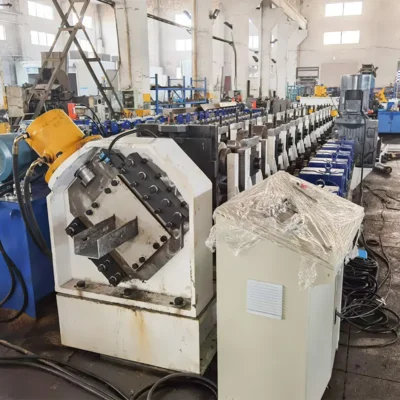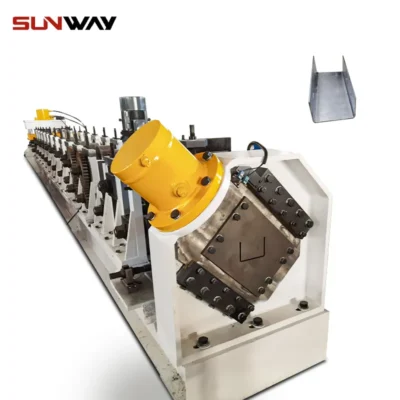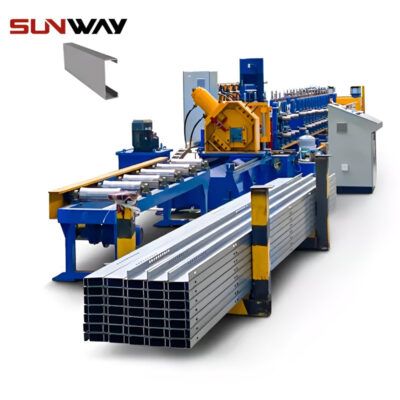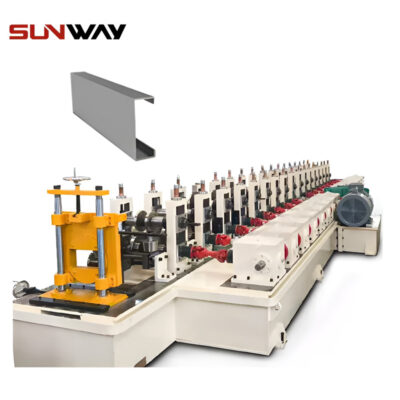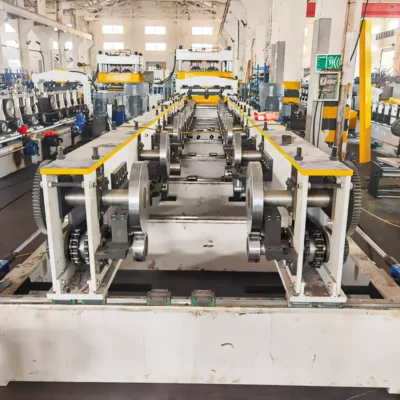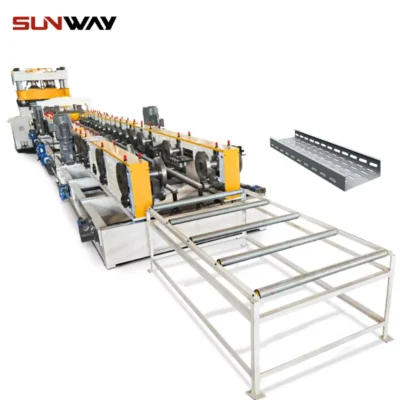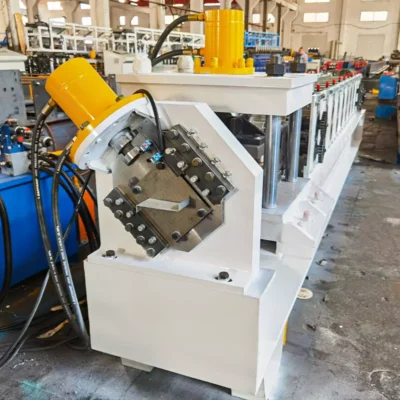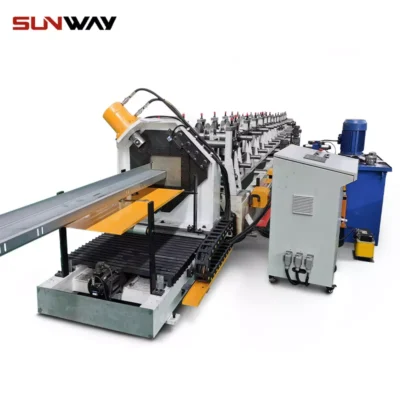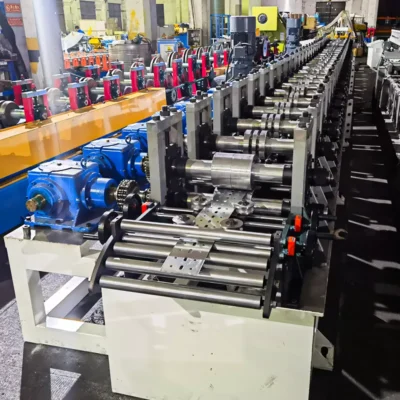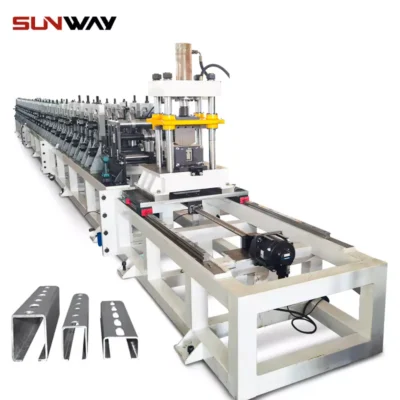In the automotive industry, precision, durability, and efficiency are not just desirable—they are essential. Among the critical components in every vehicle is the transmission housing, which protects the transmission system and ensures its optimal performance. Manufacturing these housings to exact specifications requires cutting-edge technology, and this is where Transmission Housing Roll Forming Machines step in as a game-changer.
These machines represent the pinnacle of advanced manufacturing, enabling the production of high-strength metal profiles for transmission housing with unparalleled precision and efficiency. Whether for passenger cars, trucks, or industrial vehicles, roll-forming machines are reshaping the way transmission housings are made, offering cost-effective, scalable, and sustainable solutions for the automotive industry.
In this comprehensive guide, we’ll explore the features, applications, workflow, pricing, and market trends of Transmission Housing Roll Forming Machines. Additionally, we’ll highlight why Wuxi Sunway Machinery is a trusted name in delivering innovative roll-forming solutions for the automotive sector.
What is a Transmission Housing Roll Forming Machine?
ए Transmission Housing Roll Forming Machine is a specialized industrial system designed to manufacture high-strength metal profiles that form the structural framework of transmission housings. These housings are essential for enclosing and protecting the gears, shafts, and other components of a vehicle’s transmission system.
The machine operates by feeding raw metal coils—typically aluminum or high-strength steel—into a series of rollers. Each roller station shapes the material incrementally, producing a precise transmission housing profile optimized for strength, durability, and weight reduction. These profiles are then assembled to create the final housing structure, ready for installation in vehicles.
Applications of Transmission Housing Roll Forming Machines
Transmission housing components produced by roll-forming machines are integral to a wide range of vehicles and machinery. Here are the primary applications:
1. Automotive Industry
- Use Case: Transmission housings for passenger cars, SUVs, and trucks.
- Why It Matters: High-quality housings ensure the durability and efficiency of a vehicle’s transmission system.
2. Commercial Vehicles
- Use Case: Heavy-duty transmission housings for buses, trailers, and delivery trucks.
- Why It’s Crucial: Roll-formed housings provide the strength required for vehicles operating under heavy loads.
3. Off-Road and Industrial Machinery
- Use Case: Housings for tractors, bulldozers, and other heavy equipment.
- Why It’s Important: Durable profiles can withstand harsh conditions and heavy usage in industrial settings.
4. Electric Vehicles (EVs)
- Use Case: Lightweight transmission housings for electric and hybrid vehicles.
- Why It’s Relevant: Roll-forming allows manufacturers to produce lightweight, precision-engineered housings that optimize energy efficiency.
5. Aerospace and Defense
- Use Case: Transmission components for aircraft and military vehicles.
- Why It’s Critical: High-strength, lightweight profiles are essential for performance and safety in demanding environments.
Key Features of Wuxi Sunway Transmission Housing Roll Forming Machines
Wuxi Sunway Machinery is a global leader in roll-forming technology, offering machines specifically designed for the unique demands of the automotive sector. Below are the standout features of their Transmission Housing Roll Forming Machines:
1. High-Strength Material Compatibility
- Supported Materials:
- Aluminum alloys
- High-strength steel
- Stainless steel
- Why It Matters: Enables the production of lightweight yet durable transmission housings for a variety of vehicles.
2. Precision Engineering
- What It Ensures: Rollers are designed to shape materials with tight tolerances and consistent quality.
- Why It’s Crucial: Guarantees uniformity in every profile, ensuring compatibility with other transmission components.
3. Multi-Profile Capability
- What It Supports: Machines can produce different profile designs to meet diverse housing requirements.
- Why It’s Beneficial: Enhances flexibility for manufacturers catering to multiple automotive brands and vehicle types.
4. High-Speed Production
- Performance: Capable of producing up to 25 meters of profiles per minute, depending on the material and design.
- Why It’s Relevant: Meets the high-volume demands of the automotive industry.
5. Integrated Cutting and Punching
- What It Offers: Machines come with built-in systems for cutting profiles to length and creating holes or slots for assembly.
- Why It’s Revolutionary: Reduces the need for secondary processing, speeding up production timelines.
6. Lightweight Profile Production
- What It Achieves: Optimized for creating lightweight profiles without compromising strength or durability.
- Why It’s Essential: Supports the automotive industry’s drive to reduce vehicle weight and improve fuel efficiency.
7. IoT and Automation Integration
- What It Provides: Real-time monitoring, data collection, and automated adjustments through IoT-enabled sensors.
- Why It’s Critical:
- Enhances production efficiency and minimizes errors.
- Enables predictive maintenance to reduce downtime.
- Supports Industry 4.0 initiatives for smart manufacturing.
8. Energy-Efficient Design
- What It Includes: Energy-saving motors and optimized power consumption systems.
- Why It Matters: Reduces operational costs and aligns with sustainability goals in manufacturing.
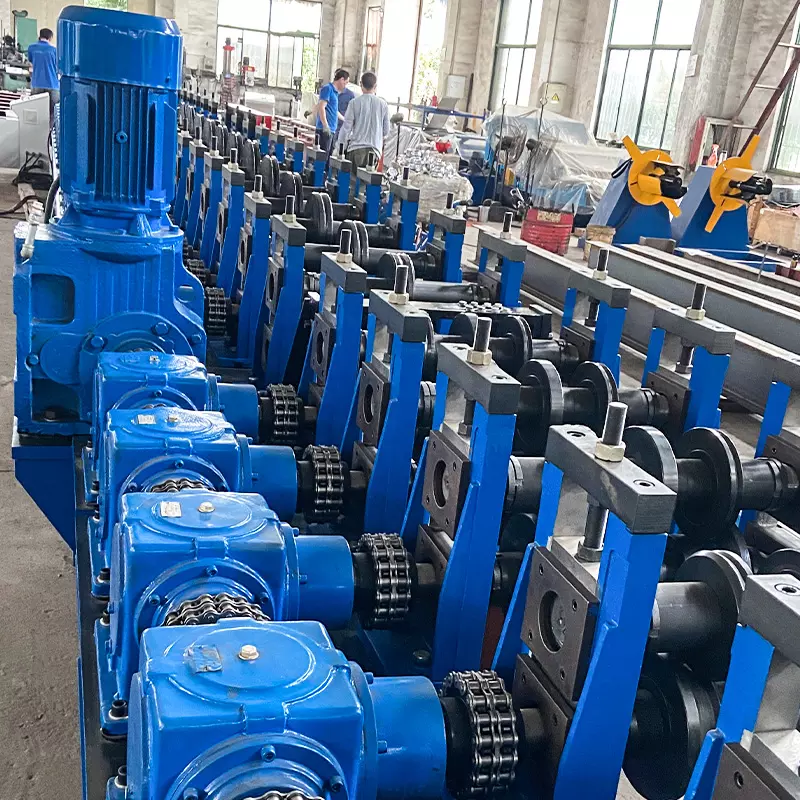
Production Workflow of a Transmission Housing Roll Forming Machine
The production process for transmission housing profiles is designed to be efficient, precise, and scalable. Here’s how the workflow unfolds:
1. Material Loading
- Raw metal coils are loaded onto the machine’s decoiler, which feeds the material into the rollers.
2. Leveling
- A leveling system ensures the material is flat and defect-free before entering the roll-forming section.
3. Roll Forming
- The material passes through a series of rollers that gradually shape it into the desired transmission housing profile.
4. Punching and Cutting
- Integrated systems create holes, slots, or custom patterns and cut the profiles to the required lengths.
5. Quality Inspection
- Each profile is inspected for dimensional accuracy and surface finish to ensure compliance with design specifications.
6. Stacking and Packaging
- Finished profiles are automatically stacked and prepared for transportation or assembly.
Pricing of Transmission Housing Roll Forming Machines
The cost of a Transmission Housing Roll Forming Machine depends on its features, production capacity, and customization options. Below is a general pricing guide for 2025:
| Machine Type | Capabilities | Price Range (USD) |
|---|---|---|
| Standard Machines | Basic profile production | $150,000–$250,000 |
| Advanced Machines | High-speed and multi-profile output | $250,000–$400,000 |
| Customizable Machines | Including IoT, automation, and advanced tooling | $400,000–$600,000 |
For detailed pricing and financing options, contact Wuxi Sunway Machinery.
Market Trends and Growth Opportunities in 2025
The global automotive market is undergoing significant transformation, driven by electrification, automation, and sustainability. These trends are fueling the demand for Transmission Housing Roll Forming Machines. Here’s what’s shaping the market:
1. Shift to Electric Vehicles (EVs)
- The Trend: The global transition to electric and hybrid vehicles is accelerating.
- Impact on Machines: Increased demand for lightweight, precision-engineered transmission housing profiles.
2. Automotive Lightweighting
- The Goal: Reducing vehicle weight to improve fuel efficiency and reduce emissions.
- How Machines Contribute: Roll-forming machines produce lightweight profiles using high-strength materials, meeting this industry objective.
3. Global Automotive Growth
- The Numbers: The global automotive market is expected to grow at a CAGR of 4.5% from 2023 to 2030.
- Why It Matters: Increased vehicle production drives the need for scalable manufacturing solutions, such as roll-forming machines.
4. Smart Manufacturing
- The Opportunity: Automotive manufacturers are adopting Industry 4.0 technologies to enhance production efficiency.
- How Machines Fit In: IoT-enabled roll-forming machines support data-driven decision-making and predictive maintenance.
FAQs About Transmission Housing Roll Forming Machines
| Question | Answer |
|---|---|
| Can these machines produce custom profiles? | Yes, modular tooling systems allow for the production of custom transmission housing designs. |
| What materials can the machine process? | Supported materials include aluminum alloys, high-strength steel, and stainless steel. |
| Does Wuxi Sunway offer training and support? | Absolutely! Comprehensive training and after-sales support are provided with every machine. |
| What is the average production speed? | Machines can produce up to 25 meters of profiles per minute, depending on the material. |
| Are financing options available? | Yes, flexible financing solutions are available for qualified buyers. |
| What industries use this machine? | Industries include automotive, aerospace, and heavy equipment manufacturing. |
Workflow Optimizations in Transmission Housing Roll Forming Machines
Efficiency is the lifeblood of automotive manufacturing, and modern Transmission Housing Roll Forming Machines are designed to streamline every step of the production process. Here’s how these machines optimize workflow to deliver high-quality transmission housing profiles at scale:
1. Automated Coil Handling
- What It Does: The machine comes equipped with automated decoilers and material feeders to handle raw metal coils.
- Why It’s Important:
- Eliminates manual loading errors.
- Speeds up production cycles by ensuring a continuous flow of material.
- Reduces operator workload, allowing for multi-machine oversight.
2. Precise Material Leveling
- How It Works: A leveling system ensures that the raw material is perfectly flat before entering the roll-forming section.
- Benefits:
- Prevents imperfections in the final profile.
- Reduces the risk of warping or buckling during the forming process.
- Ensures consistent quality for every transmission housing profile.
3. Multi-Stage Roll Forming
- What It Achieves: The material passes through multiple roller stations, each shaping it incrementally into the desired profile.
- Why It’s Effective:
- Ensures precision with tight tolerances.
- Accommodates complex designs, including profiles with multiple grooves, channels, and bends.
- Minimizes stress on the material, preserving its structural integrity.
4. Inline Punching and Laser Cutting
- What It Includes: Integrated punching and cutting systems create holes, slots, and custom cuts as part of the roll-forming process.
- Advantages:
- Eliminates the need for secondary operations, saving time and labor.
- Ensures precise alignment of holes and slots for seamless assembly.
- Supports custom configurations for unique vehicle designs.
5. Real-Time Quality Monitoring
- How It Works: Sensors and cameras monitor the production process, checking dimensions, surface finish, and edge quality.
- Why It’s Crucial:
- Detects defects early, reducing waste and rework.
- Ensures compliance with automotive industry standards.
- Enhances customer satisfaction by delivering consistently high-quality components.
6. Automated Stacking and Packaging
- What It Does: Finished profiles are automatically stacked, bundled, and prepared for transportation or assembly.
- Why It’s Beneficial:
- Simplifies logistics and reduces handling time.
- Protects profiles from damage during storage and shipping.
- Ensures timely delivery to automotive assembly lines.
Technological Advancements in Transmission Housing Roll Forming Machines
The automotive industry’s evolving needs have led to significant advancements in roll-forming technology. Modern Transmission Housing Roll Forming Machines are equipped with state-of-the-art features that enhance performance, efficiency, and customization. Let’s dive into the key innovations:
1. Artificial Intelligence (AI) Integration
- What It Does: AI algorithms analyze production data in real time, optimizing machine performance and identifying potential issues.
- Why It’s Revolutionary:
- Reduces machine downtime through predictive maintenance.
- Enhances precision by adjusting roller alignment dynamically.
- Improves overall productivity and efficiency.
2. Modular Roller Design
- How It Works: Rollers can be easily swapped out or reconfigured to produce different profile designs.
- Benefits:
- Reduces downtime during product transitions.
- Supports the production of custom profiles for diverse vehicle models.
- Enhances flexibility for manufacturers serving multiple clients.
3. High-Speed Servo Motors
- What It Provides: Advanced servo motors control the speed and positioning of rollers with exceptional precision.
- Advantages:
- Increases production speed without sacrificing quality.
- Reduces energy consumption through optimized motor control.
- Supports the production of intricate profiles with tight tolerances.
4. IoT-Enabled Connectivity
- What It Includes: IoT sensors collect performance data and transmit it to a centralized dashboard for analysis.
- Why It’s Critical:
- Enables remote monitoring and diagnostics.
- Supports data-driven decision-making to enhance efficiency.
- Facilitates integration with Industry 4.0 manufacturing ecosystems.
5. Advanced Material Compatibility
- Supported Materials:
- Ultra-high-strength steel (UHSS) for heavy-duty applications.
- Lightweight aluminum alloys for electric vehicles.
- Stainless steel for corrosion-resistant housings.
- Why It Matters:
- Expands the range of applications for roll-formed transmission housings.
- Meets the diverse needs of automotive manufacturers.
Market Adoption Trends for Transmission Housing Roll Forming Machines
The global automotive landscape is evolving rapidly, with significant implications for the demand and adoption of Transmission Housing Roll Forming Machines. Here are the key trends driving this market in 2025:
1. Rise of Electric and Hybrid Vehicles
- The Shift: Electric vehicles (EVs) and hybrids are becoming mainstream, with global sales projected to reach 40 million units by 2030.
- Impact on Machines:
- Increased demand for lightweight transmission housing profiles to enhance energy efficiency.
- Roll-forming machines must deliver precision-engineered components for EV-specific designs.
2. Growth in Emerging Markets
- The Opportunity: Developing regions like Asia-Pacific, Latin America, and Africa are witnessing rapid automotive industry growth.
- Why It Matters:
- Manufacturers in these regions are investing in roll-forming machines to localize production.
- Cost-effective machines enable competitive pricing for vehicles in emerging markets.
3. Lightweighting Initiatives in Automobiles
- The Goal: Automakers are prioritizing weight reduction to improve fuel efficiency and reduce emissions.
- How Machines Help:
- Roll-forming technology enables the production of lightweight yet strong profiles.
- Supports the use of advanced materials like aluminum and ultra-high-strength steel.
4. Demand for Customization
- The Trend: Automotive brands are offering highly customized vehicles to meet diverse consumer preferences.
- Impact on Machines:
- Increased need for flexible manufacturing solutions capable of producing custom transmission housing profiles.
- Roll-forming machines with modular tooling systems are ideal for this demand.
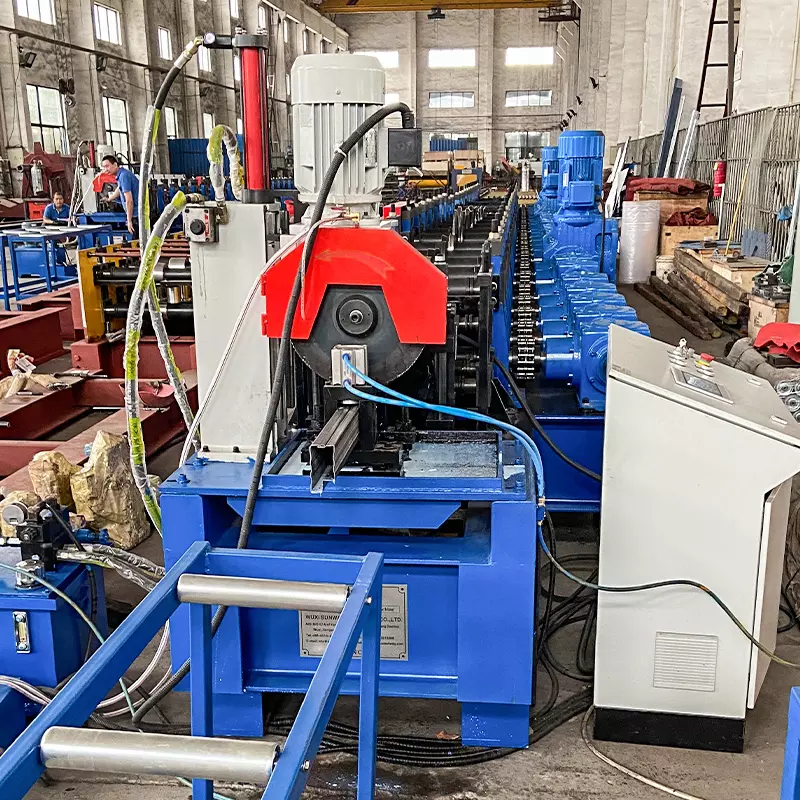
Environmental Benefits of Transmission Housing Roll Forming Machines
Sustainability is a top priority for the automotive industry, and Transmission Housing Roll Forming Machines are designed to support eco-friendly manufacturing practices. Here’s how:
1. Reduced Material Waste
- How It Works: Precision shaping and cutting systems maximize material utilization, reducing scrap.
- Outcome:
- Conserves resources and lowers production costs.
- Reduces the environmental impact of manufacturing processes.
2. Use of Recyclable Materials
- The Advantage: Machines process recyclable materials like aluminum and steel, which can be repurposed at the end of their lifecycle.
- Impact:
- Promotes a circular economy in the automotive sector.
- Reduces landfill waste.
3. Energy Efficiency
- What It Includes: Energy-saving motors and optimized production cycles.
- Why It’s Important:
- Lowers electricity consumption, reducing the carbon footprint of manufacturing.
- Aligns with automakers’ sustainability goals.
4. Localized Production
- What It Enables: Machines allow manufacturers to set up localized production facilities, reducing transportation emissions.
- Why It Matters:
- Enhances supply chain efficiency.
- Supports regional sustainability initiatives.
FAQs About Transmission Housing Roll Forming Machines
| Question | Answer |
|---|---|
| What industries use this machine? | Primary industries include automotive, aerospace, and industrial machinery. |
| Can the machine produce lightweight profiles? | Yes, it supports materials like aluminum alloys for lightweight applications. |
| Does Wuxi Sunway offer installation services? | Absolutely! Turnkey installation and training services are provided. |
| What is the machine’s lifespan? | With proper maintenance, these machines can last 15–25 years or more. |
| Are financing options available? | Yes, Wuxi Sunway offers flexible financing solutions for qualified buyers. |
Why Choose Wuxi Sunway Machinery for Transmission Housing Roll Forming Machines?
Wuxi Sunway Machinery is a global leader in roll-forming technology, offering unmatched expertise and innovation. Here’s why they’re the preferred choice for automotive manufacturers:
- Decades of Experience: Proven track record in delivering reliable roll-forming solutions for critical industries.
- Customization Excellence: Machines tailored to meet the unique requirements of transmission housing production.
- Global Reach: Trusted by manufacturers across Asia, Europe, the Americas, and beyond.
- Sustainability Leadership: Eco-friendly designs align with the automotive industry’s green initiatives.
- Cutting-Edge Technology: Features like IoT integration, AI-driven quality control, and modular tooling systems.
- Comprehensive Support: From installation to maintenance, Sunway ensures seamless operations and customer satisfaction.
Conclusion: Driving Automotive Excellence with Precision Engineering
The Transmission Housing Roll Forming Machine is a cornerstone of modern automotive manufacturing, offering the precision, efficiency, and flexibility needed to meet the industry’s evolving demands. Whether you’re producing components for traditional vehicles, EVs, or industrial machinery, these machines are essential for staying competitive in a rapidly changing market.
Ready to revolutionize your manufacturing capabilities and lead the future of automotive innovation? Contact Wuxi Sunway Machinery today to explore their world-class roll-forming solutions. Together, let’s shape the future of mobility—one transmission housing at a time!

